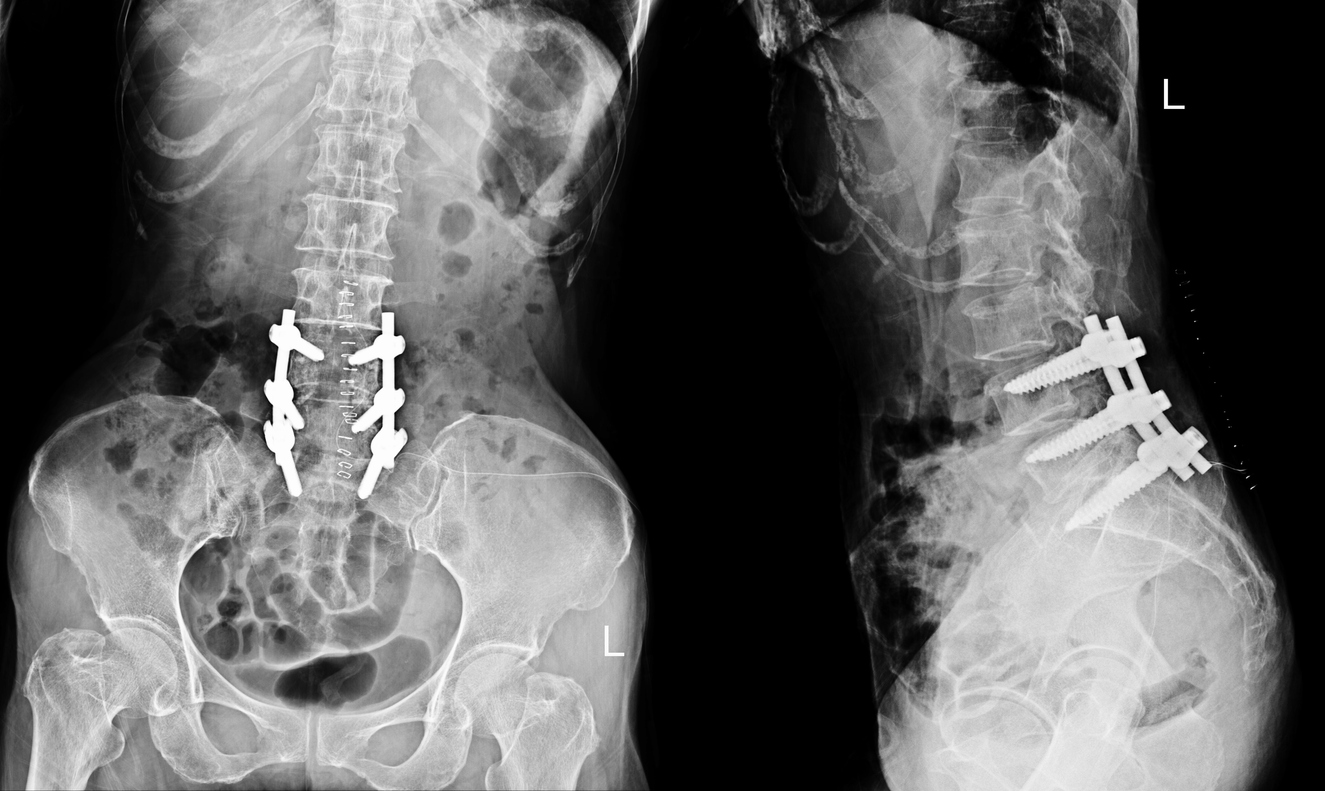
Spinal Fusion Surgery
What Is Spinal Fusion?
Conditions Treated with Spinal Fusion
Dr. Mohammed Faizan performs spinal fusion surgery for a wide range of spine-related conditions, including:
Degenerative Disc Disease – Damage or wear-and-tear in spinal discs causing chronic pain.
Spondylolisthesis – Slipping of one vertebra over another leading to instability.
Spinal Fractures – Due to trauma or osteoporosis requiring stabilization.
Scoliosis & Kyphosis – Abnormal spinal curvatures corrected through fusion.
Chronic Low Back Pain – Persistent pain not responding to conservative treatments.
Spinal Stenosis – Narrowing of the spinal canal compressing the nerves.
Infections or Tumors – Structural compromise of the spine requiring reconstruction.
Comprehensive Diagnostic Approach
Before recommending spinal fusion, Dr. Faizan conducts a detailed evaluation to ensure the surgery is the best option for the patient’s condition. This includes:
Detailed Medical History Review
Physical and Neurological Examination
Advanced Imaging Tests: MRI, CT Scan, and X-rays
Assessment of Spinal Alignment and Stability
The diagnosis helps determine the exact site and type of fusion required, ensuring a targeted and minimally invasive approach.
Types of Spinal Fusion Techniques
At Vidarbha Institute of Spinal Surgery, Dr. Mohammed Faizan uses cutting-edge techniques tailored to each patient’s anatomy and diagnosis.
1. Posterior Lumbar Interbody Fusion (PLIF)
Performed from the back of the spine, PLIF involves removing the damaged disc and fusing the vertebrae using bone grafts and implants.
2. Transforaminal Lumbar Interbody Fusion (TLIF)
A minimally invasive variation of PLIF, TLIF allows better access to the disc space with reduced tissue disruption and faster recovery.
3. Anterior Lumbar Interbody Fusion (ALIF)
Conducted through the abdomen, ALIF offers a clear view of the spine’s front portion and is often used for lumbar disc diseases.
4. Lateral Lumbar Interbody Fusion (LLIF)
A side approach to fusion that minimizes muscle injury and preserves spinal integrity.
5. Cervical Spinal Fusion
Used for neck problems such as herniated discs or cervical spondylosis. It helps stabilize and relieve nerve compression in the cervical spine.
Minimally Invasive Spinal Fusion
Dr. Mohammed Faizan specializes in minimally invasive spinal fusion, which uses smaller incisions, advanced imaging guidance, and specialized instruments.
Advantages include:
Smaller incisions and minimal blood loss
Less postoperative pain
Reduced hospital stay
Faster recovery and return to daily activities
Minimal scarring
The Surgical Process
Anesthesia & Preparation: The patient is given general anesthesia for a pain-free procedure.
Incision & Exposure: The surgeon accesses the spine through a specific approach (back, side, or front).
Disc Removal: Damaged discs or tissues causing pain are carefully removed.
Bone Graft Placement: Bone grafts and implants (screws, rods) are positioned to stabilize the spine.
Closure: The incision is closed, and recovery begins under expert supervision.
The procedure typically lasts 2–4 hours, depending on the complexity and number of levels fused.
Recovery & Rehabilitation
Post-surgery, patients receive complete guidance on pain management, physiotherapy, and mobility exercises.
Recovery milestones include:
Hospital stay of 2–4 days (depending on procedure type)
Gradual resumption of walking and daily activities
Structured physiotherapy for muscle strengthening
Follow-up imaging to monitor bone fusion
Within a few months, most patients experience significant pain reduction and improved stability, enabling them to return to normal life.
